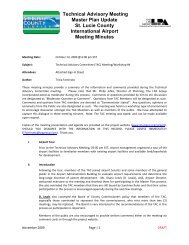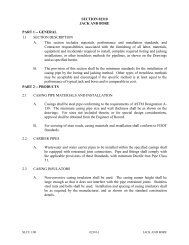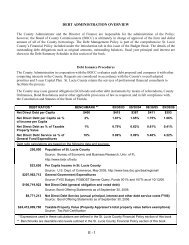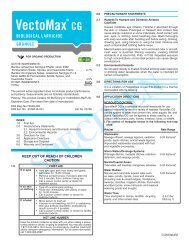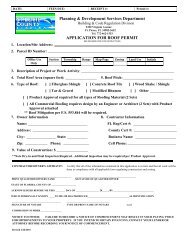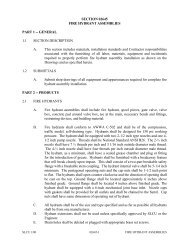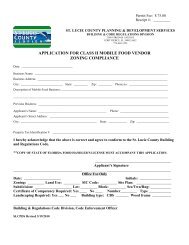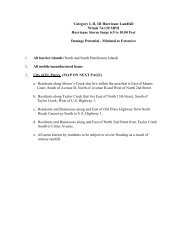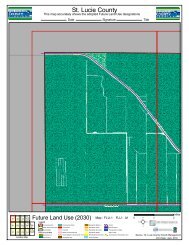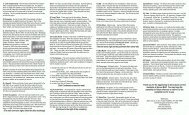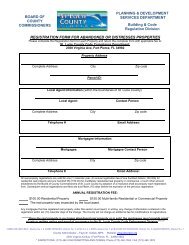Native Habitat Inventory Final Report 2004 - St. Lucie County
Native Habitat Inventory Final Report 2004 - St. Lucie County
Native Habitat Inventory Final Report 2004 - St. Lucie County
Create successful ePaper yourself
Turn your PDF publications into a flip-book with our unique Google optimized e-Paper software.
The species-area relationship does not mean that only large areas should be valued or<br />
protected. There are many instances where small areas can be of very high ecological<br />
value and even without landscape scale connectivity should be protected. This is<br />
especially true where there is a very rare species or a unique habitat (i.e., endemics).<br />
<strong>County</strong>wide Overview<br />
<strong>Native</strong> <strong>Habitat</strong> Lost and Preserved 1992-2002<br />
The <strong>County</strong> ESL Program goal is to increase the acreage of native habitat preserved as<br />
well as preserve unique communities and species. As of 2002, there were 19,417 acres of<br />
public conservation land within the <strong>County</strong> (<strong>St</strong>. <strong>Lucie</strong> <strong>County</strong> ESL020303 shapefile).<br />
Some key protected areas are interspersed with areas under intensive development<br />
pressure such as the coastal and island areas, the high ancient dunes along US 1, as well<br />
as the <strong>St</strong>. <strong>Lucie</strong> River and its tributaries.<br />
An indicator of development is the number of parcels per unit area. In the eastern third of<br />
the county (roughly east of the western boundary of Port <strong>St</strong>. <strong>Lucie</strong>) there are 129,000<br />
parcels. This is 98% of all of the parcels in the entire county. This suggests there is<br />
intensive development of the entire eastern third of the county. A subset of this area, the<br />
southeastern corner, as framed by the northern and western extents of Port <strong>St</strong>. <strong>Lucie</strong>,<br />
contains 71% of the parcels (94,000) within less than 20% of the county. However,<br />
within this portion of the county there are several large natural areas remaining (e.g.,<br />
Savannas Reserve – nearly 500 acres and the series of conservation lands stretching south<br />
from Bear Point – over 800 acres).<br />
The western two-thirds is less developed. The land is used for intensive agriculture such<br />
as cattle grazing and citrus groves. However, within this landscape are large patches<br />
(>500 acres) of natural to semi-natural habitat, mainly in unimproved cattle pasture and<br />
wetlands. These large areas are central elements to the proposed Florida ecological<br />
greenway network (Florida 1999-2001) within the Treasure Coast region.<br />
The intensive development pressure in the eastern third of the county accounts for most<br />
of the 3,052 acres of natural areas lost between 1992 and 2002. Most of this was within<br />
or immediately adjacent to urban areas, especially Port <strong>St</strong>. <strong>Lucie</strong>.<br />
In addition to the direct loss of acres of native habitat there is increased fragmentation of<br />
the remaining natural lands outside of public ownership. Only about half (52%) of the<br />
natural lands left are greater than 100 acres in size. The small areas cost more per acre to<br />
acquire and manage, often have a greater percentage of undesirable edge, fewer species, a<br />
reduced likelihood of long-term persistence, and reduced management options due to<br />
external constraints (e.g., fire and residential areas).<br />
To calculate areas of native habitat lost and conserved between 1992 and 2002 two GIS<br />
coverages were created. An approximate historic landcover of the county in 1992 was<br />
4




